Posted on May 30th, 2017 by Mary Lord
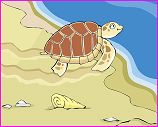 Cloud classification, coastal environments, and sea turtles and their quest to nest are among the interactive online games highlighting environmental science and stewardship on the National Oceanic and Atmospheric Administration’s Planet Arcade portal.
Cloud classification, coastal environments, and sea turtles and their quest to nest are among the interactive online games highlighting environmental science and stewardship on the National Oceanic and Atmospheric Administration’s Planet Arcade portal.
Read More
Filed under: For Teachers, K-12 Outreach Programs, Web Resources | Comments Off on NOAA’s Planet Arcade
Tags: Class Activities, Climate, coastal management, earth sciences, Environmental science, erosion, interactive games, NOAA, oceans, shore, STEM education, waterways, Weather, Web Resources, Website
Posted on May 30th, 2017 by Mary Lord
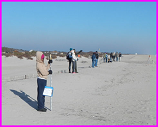 High school students working in groups of three to four learn about the primary causes and impacts of coastal erosion, and use elevation data to construct profiles of a beach over time or to compare several beaches, make inferences about the erosion process, and discuss how humans should respond.
High school students working in groups of three to four learn about the primary causes and impacts of coastal erosion, and use elevation data to construct profiles of a beach over time or to compare several beaches, make inferences about the erosion process, and discuss how humans should respond.
Read More
Filed under: Class Activities, Grades 9-12, Grades 9-12, Grades 9-12, Lesson Plans | Comments Off on Who Moved the Beach?
Tags: beach, Civil Engineering, Class Activities, coastal erosion, coastal management, data analysis, Earth Science, Environmental Engineering, erosion, Grades 9-12, jetties, Lesson Plan, NOAA, USGS
Posted on May 4th, 2017 by Mary Lord
 Students in grades 3 to 8 study coastal erosion and the apply the engineering design process to devise structures and policies to protect shorelines, taking public concerns into account.
Students in grades 3 to 8 study coastal erosion and the apply the engineering design process to devise structures and policies to protect shorelines, taking public concerns into account.
Read More
Filed under: Class Activities, Grades 6-8, Grades 6-8, Grades 6-8, Grades K-5, Grades K-5, Grades K-5, Lesson Plans | Comments Off on Save Our Shore!
Tags: beach, Civil Engineering, Class Activities, coastal engineering, Earth Science, Engineering Design Process, Environmental Engineering, erosion, Grades 6-8, Grades K-5, Lesson Plan, Marine Science, sand
Posted on April 20th, 2017 by Mary Lord
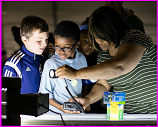 Students in grades 6-7 build light meters and investigate the nature, sources, and levels of light in their classroom. learning about the adverse effects of artificial light on humans, animals, and plants as well as the engineering concepts of sensors and lumen and lux (lx) illuminance units. They also learn how to better use light and save energy as well as some of the technologies designed by engineers to reduce light pollution and energy waste.
Students in grades 6-7 build light meters and investigate the nature, sources, and levels of light in their classroom. learning about the adverse effects of artificial light on humans, animals, and plants as well as the engineering concepts of sensors and lumen and lux (lx) illuminance units. They also learn how to better use light and save energy as well as some of the technologies designed by engineers to reduce light pollution and energy waste.
Read More
Filed under: Class Activities, Grades 6-8 | Comments Off on Measuring Light Pollution
Tags: Class Activities, Computer Science, data analysis, Electrical Engineering, Environmental Engineering, Environmental science, Grades 6-8, graphing, LEGO MINDSTROMS, Light pollution, lumens, lux, Mathematics, measuring, sensors
Posted on March 10th, 2017 by Mary Lord
 Students in upper elementary/early middle school follow the engineering design process to brainstorm and build prototype sneakers from a variety of materials to meet such design requirements as good traction or deep cushioning. They learn how the sole provides support, cushioning, and traction. There also may be some fashion-based functions, including cool colors or added height.
Students in upper elementary/early middle school follow the engineering design process to brainstorm and build prototype sneakers from a variety of materials to meet such design requirements as good traction or deep cushioning. They learn how the sole provides support, cushioning, and traction. There also may be some fashion-based functions, including cool colors or added height.
Read More
Filed under: Class Activities, Grades 6-8, Grades K-5 | 2 Comments »
Tags: 3-D modeling, athletic, Biomedical Engineering, Class Activities, computer-assisted design, engineering design proces, Grades 6-8, Grades K-5, manufacturing, shoe design, sneaker, Sports
Posted on February 16th, 2017 by Mary Lord
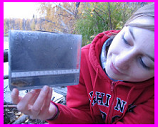 Middle school students learn that ordinary people like themselves can make meaningful contributions to science by reviewing examples of citizen science projects on Zooniverse, an interactive website. They then form “engineering teams” to brainstorm projects for their own community and design conceptual interactive websites that could organize and support them.
Middle school students learn that ordinary people like themselves can make meaningful contributions to science by reviewing examples of citizen science projects on Zooniverse, an interactive website. They then form “engineering teams” to brainstorm projects for their own community and design conceptual interactive websites that could organize and support them.
Read More
Filed under: Class Activities, Grades 6-8, Grades 6-8, Lesson Plans | Comments Off on Citizen Science
Tags: Citizen Science, Class Activities, data analysis, environment, Grades 6-8, Lesson Plan, Website
Posted on February 3rd, 2017 by Mary Lord
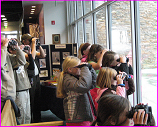 Want to engage your students while helping scientists get the “big picture” on what’s happening to bird populations worldwide? Grab some binoculars and join the annual Great Backyard Bird Count, which takes place February 17-20, 2017.
Want to engage your students while helping scientists get the “big picture” on what’s happening to bird populations worldwide? Grab some binoculars and join the annual Great Backyard Bird Count, which takes place February 17-20, 2017.
One of the oldest and biggest citizen-science projects is the annual Great Backyard Bird Count, held this year from February 17 to 20
Read More
Filed under: Class Activities, Grades 6-8, Grades 9-12, Grades K-5, K-12 Outreach Programs, Special Features, Web Resources | Comments Off on STEM Takes Wing!
Tags: Citizen Science, Class Activities, cornell ornithology lab, Curriculum, Events, Great Backyard Bird Count, national audubon society, STEM education
Posted on December 12th, 2016 by Mary Lord
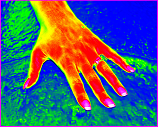 In this lesson, high school students learn the value of writing and art in science and engineering by designing visual diagrams to communicate the results of thermal conductivity (heat flow) experiments they have conducted to anyone with little background on the subject. The principles of visual design include contrast, alignment, repetition, and proximity, and involve such elements as the use of lines, color, texture, shape, size, value, and space.
In this lesson, high school students learn the value of writing and art in science and engineering by designing visual diagrams to communicate the results of thermal conductivity (heat flow) experiments they have conducted to anyone with little background on the subject. The principles of visual design include contrast, alignment, repetition, and proximity, and involve such elements as the use of lines, color, texture, shape, size, value, and space.
Read More
Filed under: Class Activities, Grades 9-12, Grades 9-12, Lesson Plans | Comments Off on Visualize STEM
Tags: Art, Class Activities, diagram, experiment, Grades 9-12, graphic design, heat flow, Presentations, STEAM, Technical Communications, thermal imaging, writing
Posted on November 23rd, 2016 by Mary Lord
 In this three-part activity, students in grades 5 to 7 act as agricultural engineers, learning about and testing the effectiveness of a sustainable pest-control technique that uses organic waste and sunlight rather than toxic chemicals to reduce weeds.
In this three-part activity, students in grades 5 to 7 act as agricultural engineers, learning about and testing the effectiveness of a sustainable pest-control technique that uses organic waste and sunlight rather than toxic chemicals to reduce weeds.
Read More
Filed under: Class Activities, Grades 6-8, Grades 6-8, Grades K-5, Lesson Plans | Comments Off on Soil Biosolarization: Sustainable Weed Killer
Tags: Agricultural Engineering, biosolarization, Class Activities, Environmental science, farming, Grades 6-8, Grades K-5, growing, soil, sustainable agriculture
 Cloud classification, coastal environments, and sea turtles and their quest to nest are among the interactive online games highlighting environmental science and stewardship on the National Oceanic and Atmospheric Administration’s Planet Arcade portal.
Cloud classification, coastal environments, and sea turtles and their quest to nest are among the interactive online games highlighting environmental science and stewardship on the National Oceanic and Atmospheric Administration’s Planet Arcade portal.








 High school students working in groups of three to four learn about the primary causes and impacts of coastal erosion, and use elevation data to construct profiles of a beach over time or to compare several beaches, make inferences about the erosion process, and discuss how humans should respond.
High school students working in groups of three to four learn about the primary causes and impacts of coastal erosion, and use elevation data to construct profiles of a beach over time or to compare several beaches, make inferences about the erosion process, and discuss how humans should respond. Students in grades 3 to 8 study coastal erosion and the apply the engineering design process to devise structures and policies to protect shorelines, taking public concerns into account.
Students in grades 3 to 8 study coastal erosion and the apply the engineering design process to devise structures and policies to protect shorelines, taking public concerns into account. Students in grades 6-7 build light meters and investigate the nature, sources, and levels of light in their classroom. learning about the adverse effects of artificial light on humans, animals, and plants as well as the engineering concepts of sensors and lumen and lux (lx) illuminance units. They also learn how to better use light and save energy as well as some of the technologies designed by engineers to reduce light pollution and energy waste.
Students in grades 6-7 build light meters and investigate the nature, sources, and levels of light in their classroom. learning about the adverse effects of artificial light on humans, animals, and plants as well as the engineering concepts of sensors and lumen and lux (lx) illuminance units. They also learn how to better use light and save energy as well as some of the technologies designed by engineers to reduce light pollution and energy waste. Students in upper elementary/early middle school follow the engineering design process to brainstorm and build prototype sneakers from a variety of materials to meet such design requirements as good traction or deep cushioning. They learn how the sole provides support, cushioning, and traction. There also may be some fashion-based functions, including cool colors or added height.
Students in upper elementary/early middle school follow the engineering design process to brainstorm and build prototype sneakers from a variety of materials to meet such design requirements as good traction or deep cushioning. They learn how the sole provides support, cushioning, and traction. There also may be some fashion-based functions, including cool colors or added height. Middle school students learn that ordinary people like themselves can make meaningful contributions to science by reviewing examples of citizen science projects on Zooniverse, an interactive website. They then form “engineering teams” to brainstorm projects for their own community and design conceptual interactive websites that could organize and support them.
Middle school students learn that ordinary people like themselves can make meaningful contributions to science by reviewing examples of citizen science projects on Zooniverse, an interactive website. They then form “engineering teams” to brainstorm projects for their own community and design conceptual interactive websites that could organize and support them.  Want to engage your students while helping scientists get the “big picture” on what’s happening to bird populations worldwide? Grab some binoculars and join the annual Great Backyard Bird Count, which takes place February 17-20, 2017.
Want to engage your students while helping scientists get the “big picture” on what’s happening to bird populations worldwide? Grab some binoculars and join the annual Great Backyard Bird Count, which takes place February 17-20, 2017. In this lesson, high school students learn the value of writing and art in science and engineering by designing visual diagrams to communicate the results of thermal conductivity (heat flow) experiments they have conducted to anyone with little background on the subject. The principles of visual design include contrast, alignment, repetition, and proximity, and involve such elements as the use of lines, color, texture, shape, size, value, and space.
In this lesson, high school students learn the value of writing and art in science and engineering by designing visual diagrams to communicate the results of thermal conductivity (heat flow) experiments they have conducted to anyone with little background on the subject. The principles of visual design include contrast, alignment, repetition, and proximity, and involve such elements as the use of lines, color, texture, shape, size, value, and space. In this three-part activity, students in grades 5 to 7 act as agricultural engineers, learning about and testing the effectiveness of a sustainable pest-control technique that uses organic waste and sunlight rather than toxic chemicals to reduce weeds.
In this three-part activity, students in grades 5 to 7 act as agricultural engineers, learning about and testing the effectiveness of a sustainable pest-control technique that uses organic waste and sunlight rather than toxic chemicals to reduce weeds.